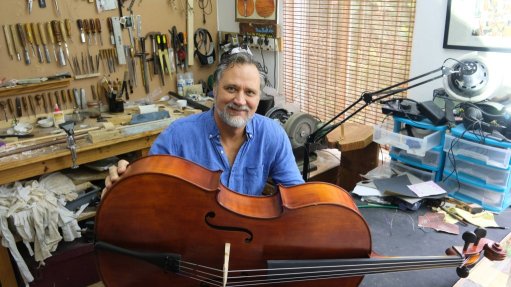The future of central grids
Is it possible that we can have a new world in which the central grid is outdated and a more diffused and dispersed system takes its place? Is this wishful thinking?
In a recent McKinsey report on disruptive technologies, published in May this year, such an idea is mooted, but predicting the future can be a perilous thing – you can be proven hopelessly wrong or even be surprised by the radical change that even your predictions could not match.
If our starting point is that there is a parallel process of a low-carbon transition future from an initial high dependence on fossil fuels to an intermediate phase of a mixed system and then a total dominance by low-carbon solutions and technologies, then an emergent self-generating and autonomous grid system is possible.
Such a system should be flexible, resilient and adaptable to changing conditions and technology shifts. It is possible that distributed generation with enhanced grid capacity that involves both bulk transmission and mini grids could be the future scenario in which power supply will become the dominant feature of energy infrastructure in the next 20 years.
A silent revolution that is already taking place within the existing system could bring about a paradigm shift in the way we think of energy planning, especially for electricity and central grid models. These pathways already exist as more and more modular technologies in the form of renewables, fuel cells, gas turbines and other forms of modular power solutions begin to gain momentum and critical mass.
These have profound implications for current pathways that reflect a specific operating, planning and management model. Our view is that, if these do get to scale and become cost effective, central power system models will have a small role in the future as power generation will mostly come from modular systems that feed the grid and use the grid to store energy. The idea of the grid will be flipped on its head – it will become a system for storage rather than transmission.
The dominance of a particular paradigm for energy planning dictates policy and the regulatory and institutional environments. Everything in its design, enactment and ways of investing lock the overall system along a particular path- way. These pathways are vulnerable to systemic risks and rapid shifts in disruptive innovations and technologies.
Modular technologies and systems can be classified into different generations – first-, second- and third-generation technologies and systems. The first is bulk and baseload systems that are inflexible, have long lead times and slow response times to demand and supply fluctuations. The first-generation system is also centrally controlled and supplied. It is highly reliant on a strong tax base and central government spending.
Second-generation systems include more intermittent sources with a mix of distributed generation but are still dominated by bulk power generation investments, such as large coal-fired power plants, pumped-storage schemes and nuclear, besides others.
Finally, third-generation sources will have predominance of distributed genera- tion with less dependence on baseload solutions. Third-generation technologies are more likely to use multiple technologies integrated into one system – such as information technology, remote sensing, bidirectional smart grids, hybrid energy stems that combine baseload and inter- mittent sources, and new types of technologies with special composite materials, which can be controlled remotely or through self-adjustment and adaptation systems.
Some of these technologies are already available on a small scale or as demonstration projects. Third-generation technologies are dominated by distributed gene- ration and are more responsive to supply and demand owing to smart grid technologies and are self-adjusting as well as centrally managed.
The crucial thing is to understand how the enabling policy and the regulatory and institutional environments operate in the current context. The question is: Can such a system be changed or reformed to allow a system to adapt to second- and third-generation options and technologies and, in so doing, allow public and private choices to change flexibly to new types of pathways that allow the potential for systemic risk and collapse to be averted or alleviated through a more open and democratic and participatory energy system?
Such enabling mechanisms for different pathways to evolve in coexistence will be the most optimal system design, with the proviso being that such a system prevents what a locked-in system can do, which is the potential for inflexibility, increased or uncontrollable costs because of capital costs, currency volatility and large maintenance and fluctuating fuel costs.
A distributed generation model also reduces the burden on the State in terms of capital and investment allocation for bulk infrastructure. This burden can be shared if the energy system and regulatory environment allow for greater participation from users – who could also be buyers and sellers at the same time. All this has to happen within a carbon-constrained world, ensuring energy security that is affordable and driving new energy enterprises within the South African economy.
Article Enquiry
Email Article
Save Article
Feedback
To advertise email advertising@creamermedia.co.za or click here
Comments
Press Office
Announcements
What's On
Subscribe to improve your user experience...
Option 1 (equivalent of R125 a month):
Receive a weekly copy of Creamer Media's Engineering News & Mining Weekly magazine
(print copy for those in South Africa and e-magazine for those outside of South Africa)
Receive daily email newsletters
Access to full search results
Access archive of magazine back copies
Access to Projects in Progress
Access to ONE Research Report of your choice in PDF format
Option 2 (equivalent of R375 a month):
All benefits from Option 1
PLUS
Access to Creamer Media's Research Channel Africa for ALL Research Reports, in PDF format, on various industrial and mining sectors
including Electricity; Water; Energy Transition; Hydrogen; Roads, Rail and Ports; Coal; Gold; Platinum; Battery Metals; etc.
Already a subscriber?
Forgotten your password?
Receive weekly copy of Creamer Media's Engineering News & Mining Weekly magazine (print copy for those in South Africa and e-magazine for those outside of South Africa)
➕
Recieve daily email newsletters
➕
Access to full search results
➕
Access archive of magazine back copies
➕
Access to Projects in Progress
➕
Access to ONE Research Report of your choice in PDF format
RESEARCH CHANNEL AFRICA
R4500 (equivalent of R375 a month)
SUBSCRIBEAll benefits from Option 1
➕
Access to Creamer Media's Research Channel Africa for ALL Research Reports on various industrial and mining sectors, in PDF format, including on:
Electricity
➕
Water
➕
Energy Transition
➕
Hydrogen
➕
Roads, Rail and Ports
➕
Coal
➕
Gold
➕
Platinum
➕
Battery Metals
➕
etc.
Receive all benefits from Option 1 or Option 2 delivered to numerous people at your company
➕
Multiple User names and Passwords for simultaneous log-ins
➕
Intranet integration access to all in your organisation


















